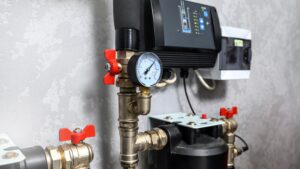Emergency Plumbing in Tacoma & Pierce County 24/7 Live Answer Free Second Opinion Quality Plumbing Services
Emergency Plumbing in Tacoma & Pierce County 24/7 Live Answer Free Second Opinion Quality Plumbing Services
Emergency Plumbing in Tacoma & Pierce County 24/7 Live Answer Free Second Opinion Quality Plumbing Services
Emergency Plumbing in Tacoma & Pierce County 24/7 Live Answer Free Second Opinion Quality Plumbing Services

Water pressure regulators are simple devices that use springs to maintain consistent and safe water pressure in your home’s plumbing system. They help prevent damage caused by high pressure on pipes, appliances, and fixtures, a common issue in many areas, including cities in Washington state.
Understanding how they work with Spartan Plumbing will help protect the safety and efficiency of your water system. Request a service today to make sure your water pressure is set correctly and to avoid plumbing problems in the future.
Water pressure regulators work by using a specific internal structure that regulates water flow to keep pressure steady. A spring-loaded pressure valve that is set to a certain tension, which can usually be changed, is at the heart of how they work.
The diaphragm and spring are forces that oppose each other. If the incoming pressure is greater than the predetermined setpoint, the diaphragm then moves to cover the valve seat, which decreases the flow. On the other hand, if the pressure is lowered, the spring will push the valve open, letting more flow through.
A water pressure regulator, or pressure reducing valve (PRV), regulates water entering a house to a safe and consistent level. Basic components include the valve body, diaphragm, and adjustment screw. Here’s a comparison:
| Component | Function |
|---|---|
| Valve Body | The house’s internal parts direct water flow while reducing pressure. |
| Diaphragm | Works with a spring to keep the water from flowing, which keeps the pressure where it should be. |
| Adjustment Screw | Lets you change the pressure settings by hand, making it fit your needs. |
The diaphragm and spring counteract incoming high pressure, limiting the water flow to a standard 50–80 psi, perfect for residential use. These key components work together to save plumbing and keep plumbing fixtures functional.
Different types of water pressure regulators work better in different plumbing situations because they each have their own benefits. The right type is chosen based on the water pressure that is needed, the environment, and the other parts of the plumbing system that are already in place.
Bell-style regulators have a simple design with a bonnet that looks like a bell. People are more familiar with them because they are used in home systems. These regulators are low-cost and do-it-yourself-friendly.

Duo regulators seamlessly integrate two phases of pressure reduction. Their construction allows them to withstand extreme pressures of up to 1,000 psi. Unlike an in-line regulator, duo regulators perform best in areas with great discrepancies in the water pressure.
Adjustable regulators let you set the preferred pressure level, providing flexibility for homes with specific plumbing requirements. They are particularly useful in applications where water pressure changes often.
They are made to work in cold weather so that plumbing systems that are outside or open don’t freeze. They keep the water pressure stable in the winter, but they cost more and need to be installed by a professional. Their benefits are most useful in places with harsh winters.
Water pressure regulators do a lot of work in keeping the plumbing system of your home in top shape. Below, we outline the main benefits of using water pressure regulators.
High water pressure above 80 psi can wear out pipes, fittings, and fixtures. A regulator prevents pipe bursts and minimizes wear on plumbing components, ensuring durability.
Putting too much pressure on your water heater, dishwasher, and washing machine can cause them to break down too soon. A regulator releases pressure so the appliances work properly and reduces the risk of failure.
By preventing too much water from flowing through, water pressure regulators save a lot of water. Lowering the pressure by just 10–20 psi can save thousands of gallons a year.
Water hammer and vibrations from too much pressure can make your plumbing system very noisy. A regulator can resolve these problems and make the living space better and quieter.
Inconsistent or high pressure can cause joints to leak and cause structural water damage. Regulators keep a perfect 40–60 psi range. This keeps walls, floors, and ceilings from getting seriously damaged and protects the long-term value of the property by keeping repairs from costing a lot of money.
Stay proactive with your plumbing to safeguard both your home and the environment. Whether it’s scheduled maintenance or a new installation, taking a little extra time to ensure the water pressure regulator is properly set can help you avoid a cascade of preventable issues.
For personalized recommendations, call Spartan Plumbing at (937) 238-8620.